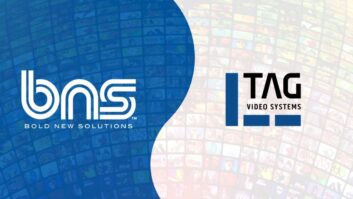
Rumour has it the BBC is in early-stage talks with rivals, including ITV, about launching a Netflix-style subscription streaming service. The move comes at a time where Netflix has already gained a monopoly in online video, with the streaming service now available globally and delivering content to a subscriber base of over 75 million and growing. Unsurprisingly, broadcasters are finding themselves in a position where they cannot compete with the content giant but must instead coexist alongside it.
At the forefront of video streaming adoption are millennials. According to one study, over 70 per cent of 18-29 year olds now use a streaming service, with 85 per cent of millennials reporting that they have tried a streaming service at one point in time. If broadcasters fail to react to this change in habits of younger consumers, they will ultimately lose out to the older age groups of the future.
Changing habits
This change is nothing new. Viewer habits have steadily transitioned from linear viewing to video on-demand in recent years, and established broadcasters have subsequently adapted their strategies to address this.
Most recently, BBC Three moved to an online-only channel in a bid to better appeal to its millennial target audience. The BBC’s new approach gives viewers the opportunity to not only ‘binge’ on series – similar to the way they are accustomed to on Netflix – but also to watch bite-sized content, akin to that found on YouTube and Facebook Video. And the BBC isn’t the only one to adapt in the face of Netflix-shaped competition. It’s an approach Channel 4 has also adopted previously for its All 4 platform, making short-form content available exclusively online to cater for the same 16-34 year old age bracket BBC Three is targeting. This approach by the two British broadcasters to attract younger audiences is likely one we’ll see other broadcasters adapting as they set their sights online.
Yet success won’t happen overnight. If rumours are true, and there is a BBC/ITV streaming service in the pipeline, then there are a number of factors which will be crucial to its success:
1) Content discovery
Recent reports have claimed that broadcasters are being outbid on content deals by Netflix. The service draws in masses of subscribers with its vast range of content, so competing with it in terms of volume is incredibly difficult. However, there are areas where both established players and new market entrants can outdo the streaming giant and dramatically grow their own subscriber bases as a result. Localisation, personalisation, and content discovery, are all aspects of user experience that these players can use to adapt and thrive.
Traditionally, broadcast television, with its linear approach to scheduling and continuity, answered the question of what to watch when a viewer turned on their TV. Times have now changed. With the shift to VoD, viewers are seeking out content that’s specific to their interests, reconsidering how, where, and when content is discovered is now one of the most essential parts of the design process for any VoD service. The content presented to subscribers on a Friday should differ to that shown on a Thursday, and time of day should be taken into consideration too. The type of content people are looking for in the evening is different to that sought by day-time viewers, and the core of any VoD service should reflect this.
2) Connecting viewers with content
According to the first report in the Guardian, the BBC and ITV Player’s planned service will most likely focus on providing older, archived TV content rather than first-run of shows. However, like Netflix, the service is also expected to include original commissions. Encouraging viewers to invest their free time in a new series or television programme is a challenge any VoD player needs to address.
There is often a tendency to focus on technology solutions when discussing VoD products, when in reality it’s about connecting users with video content. Technology that is aware of a wide range of content types, whether it’s a trailer, a bite-sized video, or a series, is key to presenting and selling content to viewers in a way they can easily understand. This approach is helping the VoD world address the lack of marketing and promotion for new and upcoming shows, as opposed to the traditional interstitial and hype that can be generated on a linear TV channel.
3) Pro-active recommendations
One notable way in which this is happening is through push notifications via mobile engagement. Being pro-active offers editors the tools to contribute to the conversation of what to watch and can create the potential to drive traffic to VoD programmes. With mobile engagement, using push notifications in this way lets the VoD service talk directly to the user, thereby encouraging them to discover new programming and build a positive relationship between viewer and product.
As with all outreaching conversations, time of day, frequency, and relevance are all important aspects to consider to avoid alienating a subscriber. An office worker will be far more receptive to receiving a push notification in the evening, as opposed to the middle of the day while they’re busy at work.
4) Personalisation
Another important factor to address is personalisation. A user’s expectation of personalisation often centres around seemingly simple functionality, such as resuming content, or watching the next episode – tasks they expect to be able to achieve quickly on re-entry to a service. There is a fine line, however, between good personalisation and over-personalisation. On occasion, users can react badly to being told content is selected ‘for them’, especially if the content in question isn’t relevant. One example of this can be found in a father’s recent grumblings that his child had been recommended Making a Murderer, because she watched Peppa Pig.
Broadcasters and other VoD players can avoid making errors such as this by valuing proper editorial recommendations rather than a coded recommendation engine. Editorial recommendations help to create a powerful and differentiated user experience that can be tailored to different demographics. A service which is run by humans, not algorithms, can take personalisation to a much higher level, helping viewers to discover content they were otherwise unaware of.
5) Localisation
Netflix is present in 190 countries, which means it faces of the challenge of understanding the often complex relationship between people, culture and technology in each country. While some regions share many of these trends and characteristics in common, there are important nuances that influence how people consume content. The BBC and ITV have been broadcasting in Britain for over 50 years, so already have the knowledge of the British culture, appreciation of the people and know what’s needed to succeed within the region.
Conclusion
While the talks are only rumoured to be in their early stage, it would be no surprise if the two broadcasting giants did unite to provide a paid subscription streaming service. Joining forces would allow the service to provide subscribers with content from a vast back catalogue; out with the boxset DVDs, and in with the on-demand, in-the-moment streaming. It would also provide them with the funds to generate the bite-sized video content that younger audiences are so accustomed to. Editorial recommendations would help the service to create a differentiated user experience, allowing the broadcasters to provide relevant, timely suggestions.
Netflix will inevitably continue to succeed for the foreseeable future, but rather than killing traditional broadcasters altogether, it is acting as a catalyst for change.
By Tom Williams, chief executive, Ostmodern







